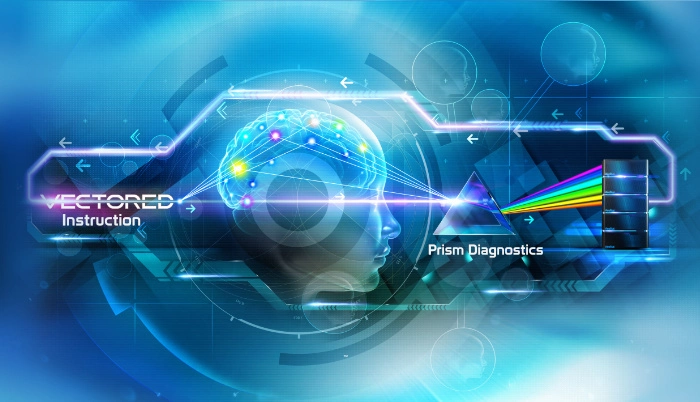All students – the ones who struggle and the ones who soar – deserve the opportunity to achieve their full potential. We developed Acellus to apply science to the learning process, using advanced technology and feedback analysis to meet the needs of diverse learners.
Parents who have enrolled students in Acellus Academy are calling Acellus a “game-changer.” Students who had become disinterested in education are regaining self-esteem and making academic progress, which was previously deemed impossible.
So what is the “secret sauce” that makes Acellus work like magic? It’s science. Building on modern research, Acellus developers study the way students learn, identify obstacles to learning, and experiment with different techniques rooted in cognitive science to discover the ones that accelerate learning. This article takes a peek under the hood at one of the core technologies that make Acellus so effective.
Vectored Instruction
The purpose of Vectored Instruction is to provide the right help to students – right when they need it most. A vector is something that has magnitude and direction. For example, force has a certain intensity and direction, which makes it a vector. At Acellus, we wanted to apply this to the education process. This cutting-edge technology looks at why students do not understand certain concepts. When we understand why students struggle on particular concepts, we can create special lessons that fill in the gaps.
Our team at Acellus has conducted research to uncover the reasons why students struggle. We collect data on how students are applying concepts to problems from each lesson. After studying this data, we use it to improve our courses and lessons. Researching how students perform in their courses allows us to take the feedback from the learning system to continuously make it better.
Our research has shown that large percentages of students give the same wrong answers. When we compare these answers, it helps us identify where these students need help. Using Prism Diagnostics, we are able to group students into spectrums or categories based on common foundational skills that they are missing or learned incorrectly in previous classes. If a student doesn’t know a concept that is foundational for the course they’re in, the system needs to build it. Likewise, if they learned a concept incorrectly, we need to reverse it.
Vectored Instruction, combined with Prism Diagnostics, fills the holes in students’ foundational knowledge. When the Acellus Learning System identifies these holes, it uses Vectored Instruction by prompting a special lesson to help students catch up. This course structure empowers students to be successful in the subjects they struggle with the most.
For example, take a math problem that asks students to apply multi-digit multiplication. A student who got the problem wrong likely landed on one of four potential answers. Based on the student’s answer, the Learning System will provide the student with an extra help video that explains why their answer was incorrect and how to work it out accurately. Therefore, when that student goes on to another, more complex problem, they will know how to work through it the right way, the first time.
Acellus Academy and Vectored Instruction
Vectored Instruction and Prism Diagnostics are integrated into the accredited online courses offered through Acellus Academy. These tools are also used by teachers in classrooms across the country.
Acellus seeks out the most qualified educators to help us create the engaging lessons and help videos that make up the Acellus Learning System. This allows us to give our students interactive courses that make them excited about learning and ignite their curiosity.
The tools we have integrated into Acellus Academy courses help many different types of students excel. The self-paced structure of our courses allows students who struggle with certain subjects to spend as much time as they need to fully comprehend the lessons.
Acellus Academy uses science to improve the education process and adapts to students’ unique needs, which leads students to become excited about learning.


Very interesting. I am glad to see platforms like this implementing adaptive learning to provide targeted support to students.
I couldn’t agree more! It’s terrific!